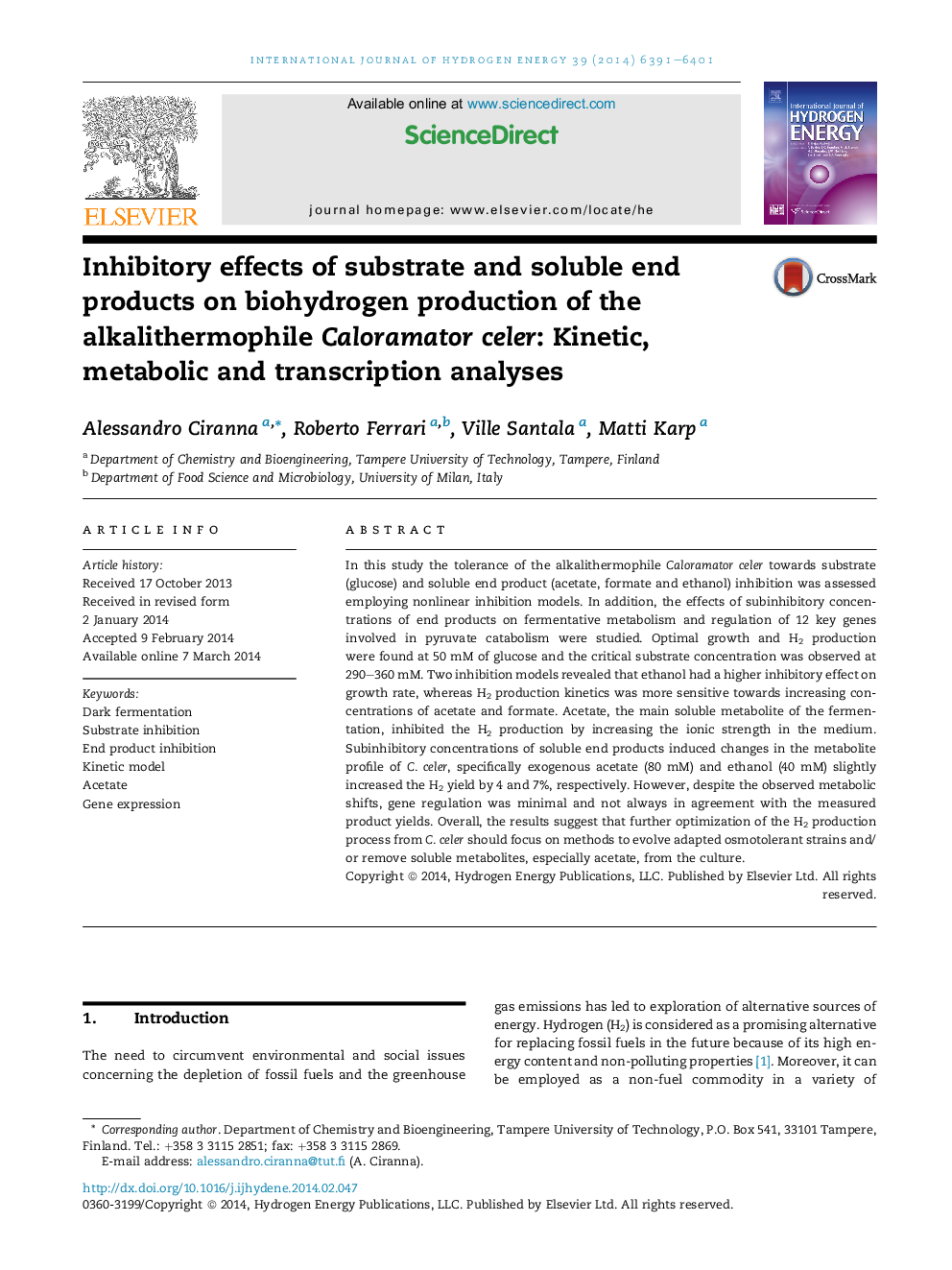| کد مقاله | کد نشریه | سال انتشار | مقاله انگلیسی | نسخه تمام متن |
|---|---|---|---|---|
| 1272832 | 1497497 | 2014 | 11 صفحه PDF | دانلود رایگان |

• Inhibitory effects of substrate and soluble end products on Caloramator celer was studied.
• Optimal growth and H2 production were found at glucose concentration of 50 mM.
• Ethanol had higher inhibition on growth, while acetate and formate on H2 productivity.
• Acetate inhibited the H2 production by increasing the ionic strength in the medium.
• Exogenous metabolites changed product yields, but minimally affected gene regulation.
In this study the tolerance of the alkalithermophile Caloramator celer towards substrate (glucose) and soluble end product (acetate, formate and ethanol) inhibition was assessed employing nonlinear inhibition models. In addition, the effects of subinhibitory concentrations of end products on fermentative metabolism and regulation of 12 key genes involved in pyruvate catabolism were studied. Optimal growth and H2 production were found at 50 mM of glucose and the critical substrate concentration was observed at 290–360 mM. Two inhibition models revealed that ethanol had a higher inhibitory effect on growth rate, whereas H2 production kinetics was more sensitive towards increasing concentrations of acetate and formate. Acetate, the main soluble metabolite of the fermentation, inhibited the H2 production by increasing the ionic strength in the medium. Subinhibitory concentrations of soluble end products induced changes in the metabolite profile of C. celer, specifically exogenous acetate (80 mM) and ethanol (40 mM) slightly increased the H2 yield by 4 and 7%, respectively. However, despite the observed metabolic shifts, gene regulation was minimal and not always in agreement with the measured product yields. Overall, the results suggest that further optimization of the H2 production process from C. celer should focus on methods to evolve adapted osmotolerant strains and/or remove soluble metabolites, especially acetate, from the culture.
Journal: International Journal of Hydrogen Energy - Volume 39, Issue 12, 15 April 2014, Pages 6391–6401